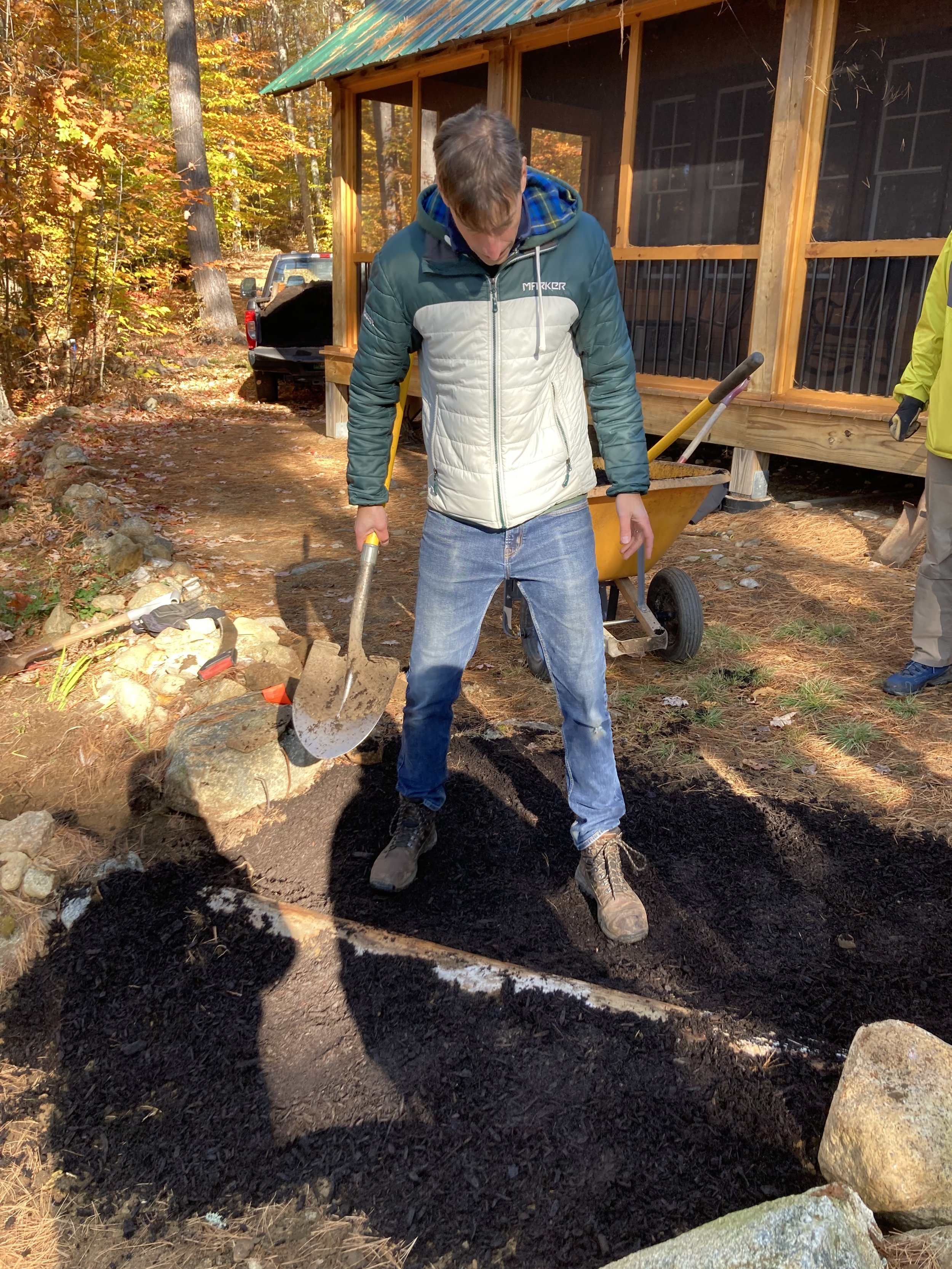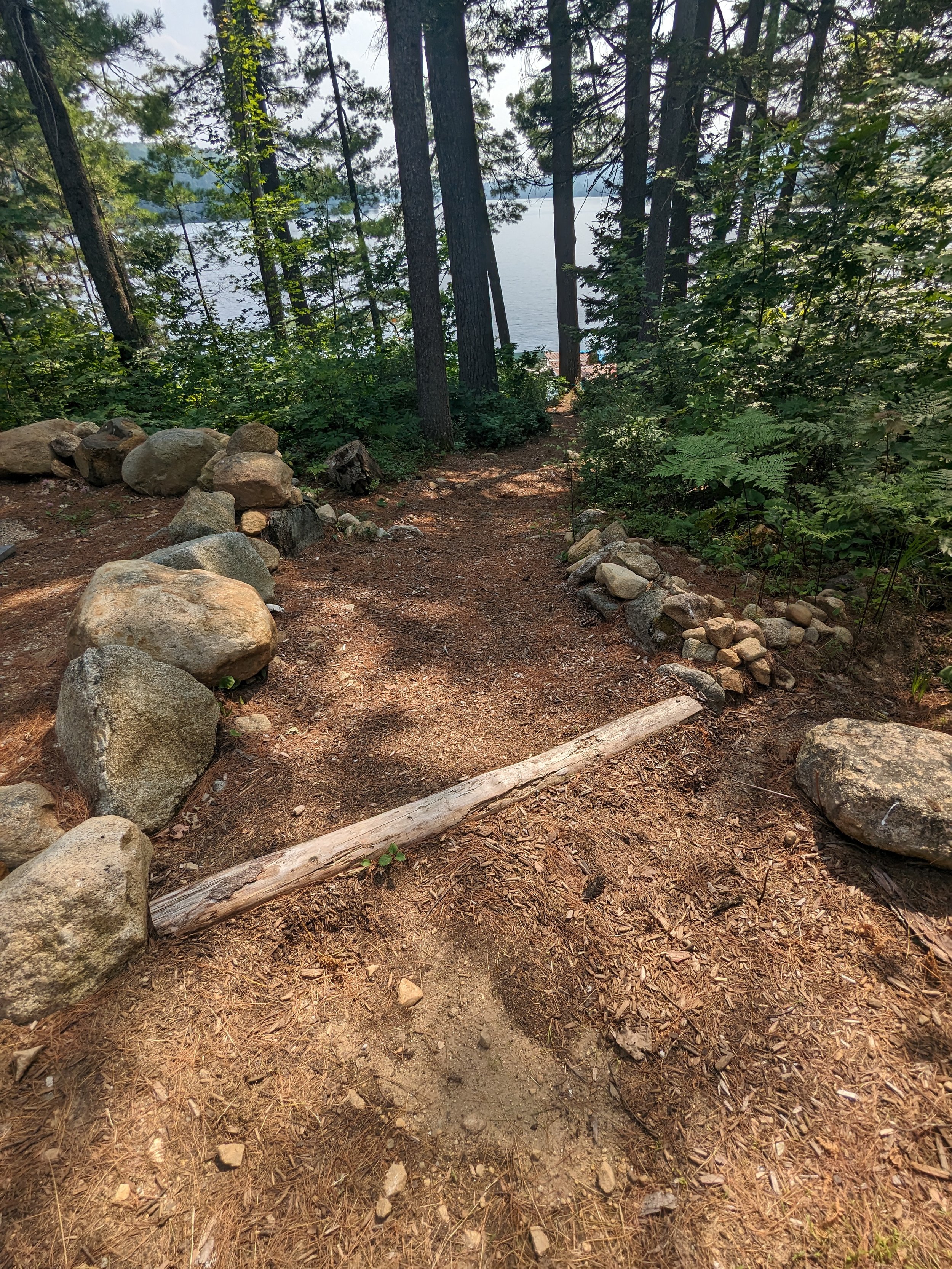Last fall our LakeSmart team hosted a hands-on shoreline improvement demonstration at a beautiful property on Upper Bay. With help from volunteers, we rebuilt several sections of the path leading down to the lake to reduce runoff and improve walkability. Check out the project in our blog article here.
One of our major jobs was installing a water bar at the top of the path to divert runoff from the house into the buffer. A year later, we revisited the property to see how the water bar held up.
Keep reading for photos of the installation and to see what the water bar looks like now.
After selecting a log from the property, it was carefully set into position at the top of the path.
Colin Holme, our landscaping expert for the day (and LEA Director), packs mulch against the log to create a firm swale that will divert runoff into the forested buffer.
The final result. Small water bars (often without a log) are commonly seen on hiking trails.
Above, you can see the water bar moments after installation. But how did it hold up over a year of snow, ice, and an uncharacteristically wet summer? A well-built path will hold up over time and during severe weather, and that was our aim with this project. We went out last week to find out.
One year later the water bar hasn’t shifted is doing it’s job well.
Good news! The water bar has held up through this wet summer. The log remained securely in place and effectively diverts runoff from the house into the forested buffer. The landowner has been happy with the new path and its performance over the year.
What simple improvements could be done to your property to reduce runoff? Sign up for a LakeSmart evaluation and we'll provide suggestions to make your property lake-friendly and more resilient.




